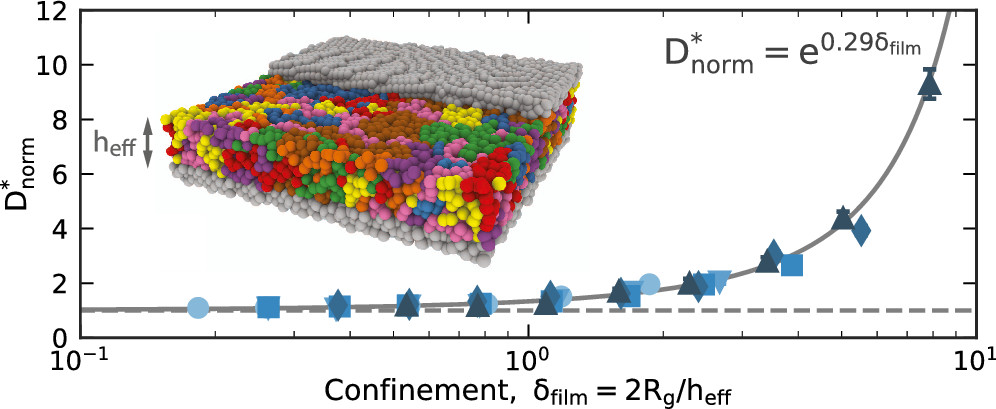Abstract
The behavior of polymer melts under planar confinement was investigated using molecular dynamics simulations. Polymers with a range of lengths, from unentangled to highly entangled \(( N = 25–400 )\), were confined between two discrete-bead parallel walls to create thin films with thicknesses (\(h = 3.5–40σ\), where \(σ\) is the unit length) ranging from much larger to much smaller than the polymer size. These simulations were used to measure polymer-chain conformations, entanglement densities, and center-of-mass diffusion, and the results were compared with previous simulations of polymer melts under cylindrical confinement. Changes to the entanglement density and radius of gyration in thin films follow the same behavior as in cylindrical confinement: decreased entanglements per chain, decreased \(R_g\) perpendicular to the confining wall, and increased \(R_g\) parallel to the confining wall, though the deviations from bulklike conformations are smaller. Despite similarities in conformation and entanglement behavior between thin-film and cylindrical confinements, the diffusion behavior differs. Under planar confinement, the diffusion coefficient increases monotonically up to 6 times the bulk diffusivity with decreasing film thickness, while it behaves nonmonotonically in cylinders. This is due to the increased degrees of freedom afforded to the polymer chains in a thin film compared to those in a cylinder, allowing chains to diffuse around one another rather than through, as found in cylindrical confinement. Normalized diffusion coefficients, \(D_{norm}\), can be well described by a master curve with an exponential dependence on confinement after scaling Dnorm by a thickness-dependent term.
